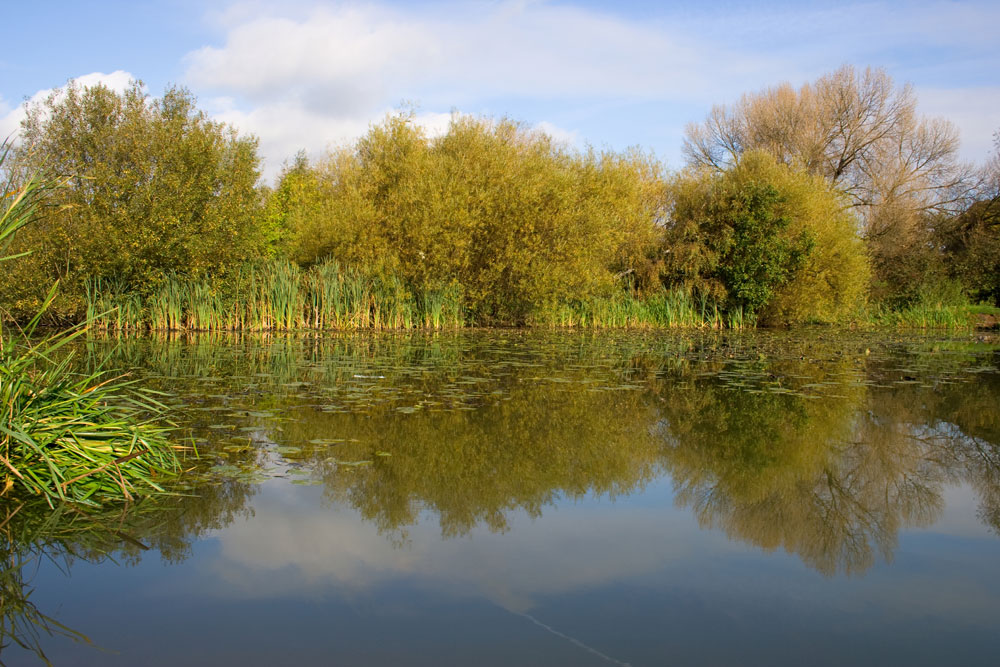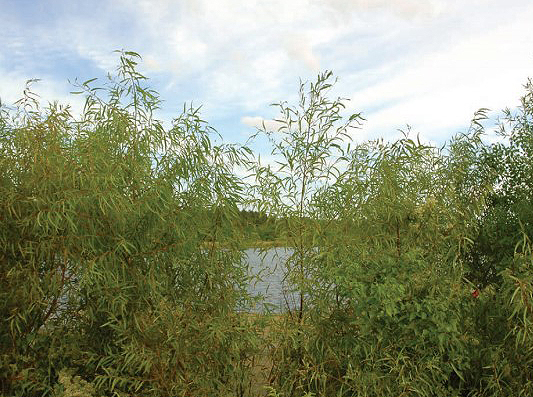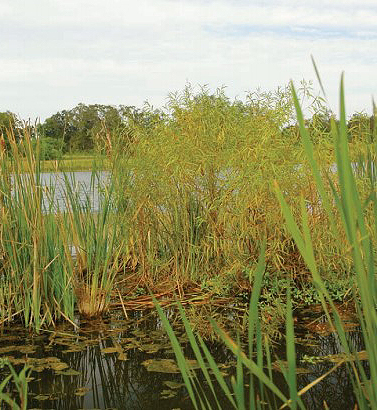Barry W. Smith | Originally published in GameKeepers: Farming for Wildlife Magazine. To subscribe, click here.

It seems every summer that we experience low water levels, many ponds develop willow trees around the damp edges. By the end of the summer, the growth does not look significant and many pond owners hope that when the pond returns to full pool the willow trees will disappear. Willows will often live for several years in water that is three to four feet deep. If you ignore these young willow plants, the next thing you know, it is late the following spring and the small thin willows of the early fall are now head high.

edge of the pond.
There are hundreds of kinds of willow trees in North America, but the most common one that presents problems for pond owners is the swamp or black willow. Swamp willows are a very aggressive plant; growing at very rapid rates it can quickly form impenetrable areas along the shoreline on a pond. Willow trees can attain heights of 60 feet and trunks a very large circumference. Seeds of the willow can easily move long distances through high winds or can move by water. Female willow trees are exclusive producers of the seeds, but require male trees in the adjacent area in order to reproduce. Swamp willows are not desirable around recreational ponds as they create thick areas that hinder bank fishing as well as provide habitat for snakes. However, the weeping willow, a cousin to the black willow, makes a beautiful addition to ponds.
Willows are common to most of North America and are frequently observed in low wet areas as well as along stream banks. They are typically identified by the long, narrow, pointed green leaves that are approximately three to four inches long. Leaves are attached to a thin limber branch and are located on the branch in an alternate fashion. The branches are a light tan color, but the trunk will be dark brown and as the tree ages will turn black, hence the name black willow.
Willow trees are useful in many ways. The primary use of willows today is for making furniture. The willow wood is soft and flexible when young, but light and strong when it is dried. The young trees and branches can be bent into shapes for baskets as well as all types of furniture. Charcoal is still made from some of the larger willow trees, both for drawing and for fire. Willow charcoal is also used in manufacturing gunpowder.

Willows often develop in ponds with extremely low
water levels and can survive for several years after
water levels return to full pool.
Willows were recognized as early as the 5th century BC, by the renowned physician Hippocrates, as having some medicinal benefits. Salicin, which chemically resembles aspirin, is found in the willow bark. Bitter teas brewed from the bark were used to relieve headaches and other pains. In North America, native Indians made a similar discovery and used willow bark and roots as part of their cultural medicines.
The fall is an ideal time to control pond willows. The young plants are still small enough to be sprayed with a hand sprayer or an electric tank sprayer. Willows are easily controlled using a two percent concentration of aquatic glyphosate with a good surfactant. Spray the entire tree, including the crown, for best results. The leaves will begin turning brown within 10 days of the herbicide treatment and the willow will soon die. Typically, fall treatments will require some follow-up treatments during the early spring. Willow stands that are more than a year old are usually tall and thick, requiring multiple treatments for good control. Thick stands of willows are difficult to treat effectively when spraying from a single side try to spray from several different angles. One of the keys to successful control of the swamp or black willow is to treat new growth in the fall before it becomes a major problem. If left unattended, willows can take over a large area of your pond making fishing difficult and creating an unsightly area that can be difficult to reclaim.





























